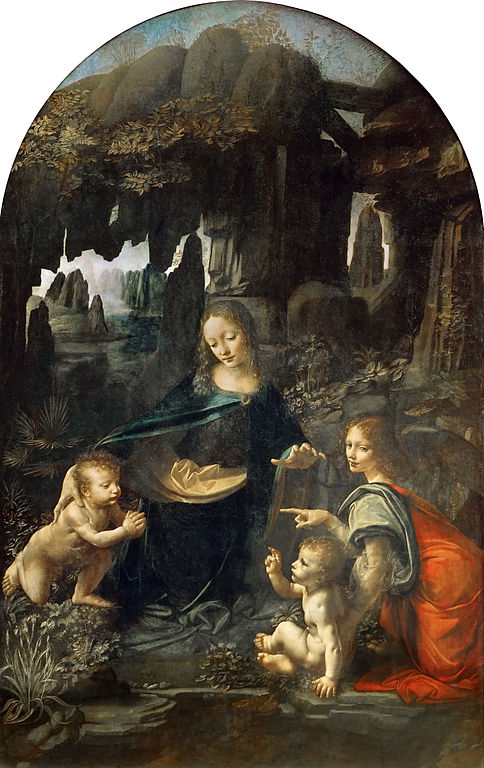
Name: Virgin of the Rocks
Artist: Leonardo da Vinci
Date Painted: c. 1483 – 1486
Period: Renaissance
Dimensions: 199 cm (h) x 122 cm (w)
Medium / Material: Oil on Panel
Current Location: Louvre, Paris
Introduction
“The Virgin of the Rocks” refers to two paintings by Leonardo da Vinci, both depicting the same religious scene but with significant variations. The first version (circa 1483-1486) is housed in the Louvre, Paris, while the second version (circa 1495–1508) resides in the National Gallery, London. These paintings are celebrated for their innovative composition, atmospheric perspective, and detailed naturalistic elements, embodying the Renaissance ideals of harmony and natural beauty.
Composition
In both versions, the composition centers around four figures: the Virgin Mary, the infant Jesus, John the Baptist, and an angel, set in a rocky, cavernous landscape. This setting is unconventional for the depiction of religious themes and showcases Leonardo’s interest in geology and the natural world. The figures are arranged in a pyramidal composition, a technique Leonardo often employed to create a balanced and harmonious structure.
Symbolism and Interaction
The interactions among the figures are imbued with symbolic meaning. The angel points towards John the Baptist, who is shown praying to Jesus, indicating John’s recognition of Jesus’s divine status. The Virgin Mary’s protective gesture over the children further emphasizes the sacred nature of the scene. These interactions not only convey the narrative but also reflect Leonardo’s study of human psychology and emotion.
Technique
Leonardo’s use of sfumato, a technique of blending colors and tones to achieve a soft, smoky effect, is evident in both versions of “The Virgin of the Rocks.” This technique allows for the subtle modeling of forms and contributes to the atmospheric quality of the paintings. The detailed rendering of the figures and the landscape also demonstrates Leonardo’s keen observation of the natural world, from the textures of rock and water to the botanical accuracy of the plants.
Atmospheric Perspective
One of the most notable aspects of these paintings is the masterful use of atmospheric perspective, a technique used to create an illusion of depth by gradually blurring and lightening colors in the distance. This is particularly evident in the background of the paintings, where the rocky landscape recedes into a misty, ethereal space, enhancing the sense of a sacred and timeless environment.
Differences between the Two Versions
While the overall composition and theme of the two paintings are similar, there are notable differences in detail and execution. The London version is generally considered to be more refined and closer to Leonardo’s original vision, with clearer articulation of space and form. The Louvre version, on the other hand, is thought to have been completed with the assistance of Leonardo’s workshop, leading to some variations in quality and detail.
Legacy
“The Virgin of the Rocks” exemplifies Leonardo’s innovative approach to religious painting, his mastery of technique, and his deep engagement with the natural world. These paintings not only reflect the artistic and intellectual currents of the Renaissance but also continue to inspire admiration for their beauty and complexity. Through his exploration of human emotion, divine interaction, and the mysteries of nature, Leonardo created works that transcend their religious context to touch on universal themes of humanity and the cosmos.